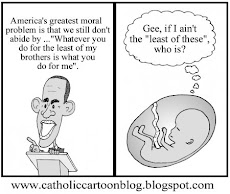The Political Class pretends to speak for women, minorities, the poor, the working class, etc. but they are overwhelmingly middle and upper middle class people of both genders who share a common secularist outlook. The rest of America represents rich and poor, Hispanic, Asian, Black and White, women and men and income levels from the lower working class to wealthy entrepreneurs. The divide is one of worldview: one is religious and one is secular. One believes in God and natural law, absolute truth and Judeo-Christian morality while the other believes in atheism, materialism, relativism and socialism.
This report from Rasmussen documents the difference between the two groups on the economy. I cite it because it is a good empirical piece of evidence that shows the actual difference in thinking between the two groups.
A new Rasmussen Reports national telephone survey finds that 75% of Likely Voters prefer free markets over a government managed economy. Just 14% think a government managed economy is better while 11% are not sure. These figures have changed little since December.
Polling released earlier this week showed that Americans overwhelmingly believe that more competition and less regulation is better for the economy than more regulation and less competition.
Not surprisingly, America’s Political Class is far less enamored with the virtues of a free market. In fact, Political Class voters narrowly prefer a government managed economy over free markets by a 44% to 37% margin. However, among Mainstream voters, 90% prefer the free market.
Outside of the Political Class, free markets are preferred across all demographic and partisan lines. This gap may be one reason that 68% of voters believe the Political Class doesn’t care what most Americans think. Fifty-nine percent (59%) are embarrassed by the behavior of the Political Class.
One really has to make a choice of which group one believes is closer to the metaphysical truth about reality. I started out as a member of the conservative majority and for 25 years attempted to accommodate myself the Political Class in order to facilitate my upward mobility in academia. It was always a struggle because I could never accept abortion or homosexuality, which function as boundary markers or group identifiers for the Political Class. I tried to fit in, however, on the basis of accepting a form of socialism. In the last two years, I have experienced a re-conversion to my conservative roots and I have simply lost my faith in big government liberalism and Marxist ideas such as the labor theory of value or the rightness of coercively-enforced economic equality. I just no longer believe in such things any more and I have found it a lot easier to read John Paul II, St. Augustine, C. S. Lewis and Alexander Solzhenitsyn now without cognitive dissonance.





1 comment:
I must say this does not surprise me. Politicians have always been materialists in that they are intensely pragmatic and cynical. The difference is in a democracy they are supposed to be representative of their constituencies.
Post a Comment